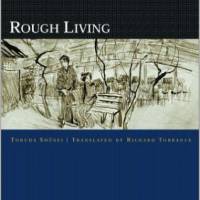Tokuda Shusei's "Rough Living," a translation of his 1915 novel "Arakure," explores lives of working-class people of the Meiji Era (1868-1912) and the rupturing social transformations taking place in Japan at the time.
Rough Living, by Tokuda Shusei, Translated by Richard Torrance.
184 pages
University of Hawaii Press, Fiction.
Through Oshima, an enterprising young seamstress, we experience the advances and injustices of the new capitalist system gripping the country. Although the male-dominated world of Meiji tries to undermine and discredit the progress achieved by women, Oshima perseveres; adopting Western dress, riding a bicycle around the streets of Tokyo, and rejecting an arranged marriage on the grounds that the young man possesses the "feudal mentality of a slave." Such sentiments were highly inflammatory.
Oshima's banter is spirited, even combative; her manner atypically assertive for the times, enabling her to not only extricate herself from a dysfunctional marriage, but to associate with a series of lovers, eventually opting to live with a common-law husband. Her success is compromised when she decides to abandon the business she fought to establish, in favor of a minor post in the household of a wealthy, charismatic man she plans to seduce.
The tensions between material and emotional desire — and Oshima's attempt to fuse them — are deftly handled by an author who is torn between admiring his main character and being repulsed by her capacity for manipulation.
Read archived reviews of Japanese classics at jtimes.jp/essential.


















With your current subscription plan you can comment on stories. However, before writing your first comment, please create a display name in the Profile section of your subscriber account page.